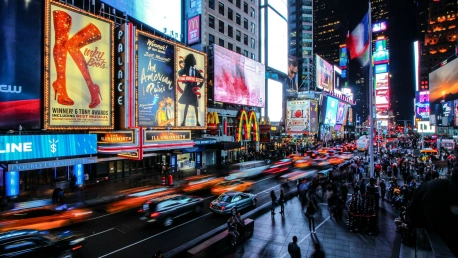The integration of programmatic buying in the Digital Out-Of-Home (DOOH) advertising sector has been progressing at a slower pace compared to other aspects of digital media. However, with evolving technology and growing marketer interest, the potential for significant development in programmatic DOOH is considerable.
Programmatic Buying and DOOH Market Potential
Traditionally, DOOH campaigns have been part of a direct selling approach, but the landscape is changing as programmatic buying begins to take hold. In the broader US advertising market, which saw $9 billion in out-of-home ad spend with $2.9 billion attributed to DOOH in 2023, there remains a substantial gap. Programmatic buying accounted for only a fraction of this, around half a billion dollars. The potential for growth is therefore undeniable, with the benefits of programmatic—such as greater flexibility, targeting, and real-time bidding—poised to transform the DOOH sector.
Screenverse’s Monetizing Strategy and Industry Impact
The key player in this transformation is Screenverse. With a targeted approach towards mid-tier DOOH networks, Screenverse is paving the way to enhance programmatic transactions. The company’s recently acquired $10.5 million in Series A funding from Volition Capital underscores the confidence in their strategy. This funding serves as a reinforcement of their mission to optimize the monetization of DOOH networks and is their only fundraising effort since inception in 2020. Screenverse’s initiative is not only indicative of industry faith but also points towards an emergent trend: the merging of digital and physical ad spaces via programmatic technology.
The Role of High-Resolution Creative Content
A key aspect of Screenverse’s strategy is focusing on high-resolution creative content. The alignment of DOOH screen resolutions with standard digital dimensions, such as 1920×1080, provides a seamless cross-platform advertising experience. This allows advertisers to repurpose creatives originally designed for online campaigns, reducing cost and effort and ensuring consistency across social media, mobile, and DOOH channels. The strategy benefits advertisers seeking an integrated approach, spreading their messages effectively across the varied landscape of digital media.
Advancements in Audience Measurement Tools
Screenverse acknowledges the criticality of audience measurement for effective programmatic DOOH. To this end, they have incorporated standardized third-party audience measurements provided by Geopath and PerView. These systems serve as buying currencies, giving advertisers the confidence to invest in DOOH by offering reliable data and comparable metrics to other digital channels. The precision and flexibility afforded by these tools empower buyers to make informed decisions and optimize their bidding strategies for DOOH placements.
Expanding Screenverse’s DOOH Network and Technologies
With a publisher network touting 90,000 screens, Screenverse is revolutionizing the DOOH landscape across various sectors. The company bolsters partnerships in diverse markets, ranging from health and wellness to transportation hubs. Thanks to the new injection of funds, Screenverse is also set to expand its staff and invest in R&D to further develop its suite of technologies. These tools, built upon machine learning—and with plans to integrate AI—are due to become even more sophisticated, providing publishers with advanced inventory and audience analytics.
Programmatic DOOH Perspectives and Company Milestones
The adoption of programmatic buying within Digital Out-Of-Home (DOOH) advertising has been somewhat sluggish compared to other digital media facets. Nevertheless, as technology continues to advance and interest from marketers rises, the outlook for programmatic DOOH is looking increasingly promising. This advertising method, which allows for automated buying and selling of ad inventory, is gaining traction as the benefits become more apparent. With programmatic DOOH, advertisers can achieve greater efficiency and precision in their campaigns, targeting specific demographics and adapting to real-time data. As the industry evolves, the infrastructure for programmatic DOOH is becoming more sophisticated, paving the way for enhanced targeting, more accountable ad spend, and ultimately, more engaging and effective advertising experiences. The future of DOOH is poised to be reshaped by programmatic capabilities, anticipating a surge in personalized, dynamic advertising in public spaces.









